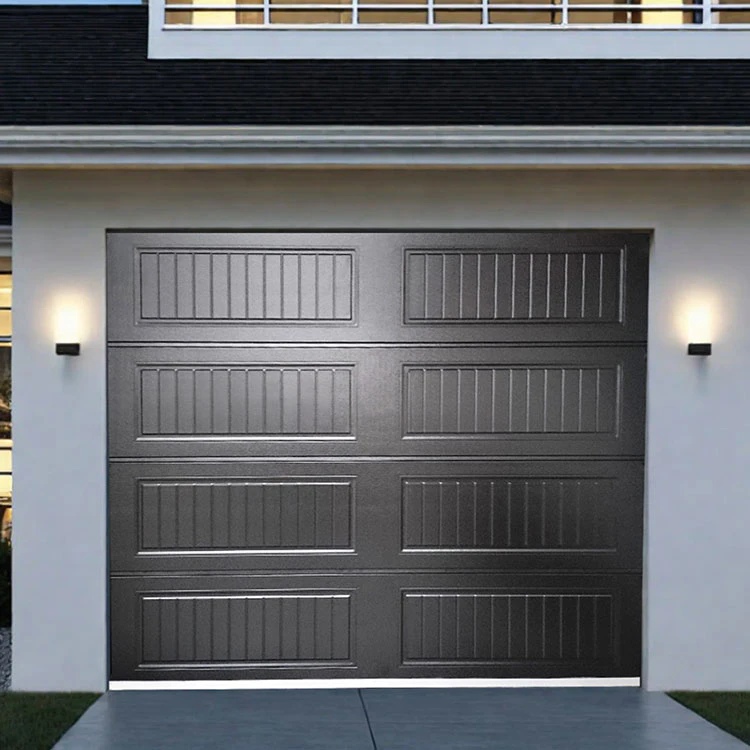Why Is a Garage Door Such an Essential Part of Your Home?
2024-11-21
When thinking about the key features of a home, many people focus on the kitchen, the living room, or the bedrooms, often overlooking one very important element—the garage door. Though it may not be the first thing that comes to mind, a garage door plays a vital role in both the functionality and aesthetics of your home. Whether you’re storing a vehicle, tools, or personal belongings, the garage door offers security, convenience, and even curb appeal.
But why exactly is a garage door so essential? In this blog, we’ll explore the importance of having the right garage door for your home, how it enhances security, and why investing in quality and maintenance matters.
Why Is a Garage Door Important?
1. Security and Protection
The primary function of a garage door is to secure the contents of your garage, whether that includes a car, bikes, or valuables. Garage doors provide a protective barrier against break-ins, ensuring that unwanted visitors stay out. A sturdy and well-functioning garage door can significantly increase the overall security of your home. Moreover, modern garage doors come with advanced features such as rolling code technology, sensors, and automatic locking systems, which provide an added layer of protection for your family and property.
2. Enhancing Curb Appeal
While the garage door’s function is primarily practical, it also serves an aesthetic purpose. The right garage door can enhance your home’s curb appeal and elevate the overall look of your property. Garage doors come in various styles, materials, and colors to match your home's design. Whether you choose a sleek, modern design or a more traditional wooden look, a well-designed garage door can complement the architecture of your home and boost its overall value.
3. Convenience and Ease of Use
Gone are the days when you had to get out of the car to manually open your garage door. Today’s automatic garage doors provide immense convenience, with remote controls, smart device integration, and even voice-activated options. Whether it’s a single-car garage or a two-car garage, the ease of accessing your space without getting out of the car during bad weather or late at night is a huge benefit. Additionally, modern garage doors are designed to open and close quickly, offering a smooth and efficient experience.
4. Energy Efficiency
Garage doors can have an impact on your home’s overall energy efficiency. Insulated garage doors, for example, help regulate the temperature in your garage, which can have a positive effect on your home’s heating and cooling costs. If your garage is attached to the house, an insulated door can prevent heat loss in the winter and keep cool air inside during the summer. This can help maintain a consistent temperature in your home, especially if the garage is used for storage or as a workspace.
5. Durability and Longevity
A garage door is an investment that, when properly maintained, can last for years. Today’s garage doors are built to be durable and weather-resistant. Whether you live in an area with harsh winters, extreme heat, or high humidity, modern garage doors are designed to withstand the elements. Steel, fiberglass, and aluminum are popular materials known for their durability, while wood provides a more classic aesthetic with proper maintenance. A good-quality garage door is built to last, offering long-term protection and minimal repairs.
How Do You Choose the Right Garage Door?
Choosing the right garage door for your home can be a challenge given the wide variety of styles, materials, and features available. Here are some factors to consider when selecting a garage door that suits your needs:
1. Material
Garage doors are typically made from wood, steel, aluminum, or fiberglass. Wood offers a classic look but may require more maintenance, while steel and aluminum doors are known for their strength and low-maintenance needs. Fiberglass is lightweight and resistant to dents, making it a good option for coastal areas. Consider the climate in your area, the level of maintenance you're willing to commit to, and the look you want to achieve.
2. Style
Garage doors come in a variety of styles, from traditional raised-panel designs to modern glass and metal constructions. Choose a style that complements your home’s architecture. If you have a contemporary or minimalist home, you may want to opt for a sleek, clean design with glass panels or metal slats. On the other hand, a rustic or farmhouse-style home might look best with a wooden or carriage-style garage door.
3. Insulation
If your garage is attached to your home or used as a workspace, consider an insulated garage door. Insulated doors are especially beneficial in areas with extreme temperatures, as they help maintain a comfortable environment inside the garage and contribute to the energy efficiency of your home. Insulated doors also help reduce noise, which can be important if you have living spaces near the garage.
4. Size and Fit
Ensure that your garage door is the correct size for your garage opening. Standard single garage doors are typically 8 to 9 feet wide, while double garage doors range from 16 to 18 feet wide. However, if your garage opening doesn’t conform to standard sizes, custom doors are available to fit unique measurements.
5. Safety Features
Modern garage doors come with a variety of safety features designed to protect you and your family. Look for features like auto-reverse mechanisms, which cause the door to reverse direction if it detects an obstruction, and motion sensors that prevent the door from closing on pets or children.
What Are the Maintenance Tips for a Long-Lasting Garage Door?
To ensure that your garage door remains in good working condition for years to come, regular maintenance is essential. Here are some tips to keep your garage door functioning smoothly:
1. Lubricate Moving Parts
Regularly lubricate the moving parts of your garage door, such as the springs, rollers, and hinges, to prevent friction and ensure smooth operation. Use a garage door-specific lubricant and avoid using WD-40, as it can cause parts to wear down over time.
2. Check for Wear and Tear
Inspect your garage door regularly for any signs of damage or wear. Look for frayed cables, bent tracks, or any other visible issues that could affect the door’s function. Early detection of problems can prevent costly repairs down the line.
3. Test the Balance
A garage door should open and close evenly. To test the balance, disconnect the opener by pulling the release cord, and manually lift the door halfway. If the door stays in place, it is properly balanced. If it falls or rises, it may need to be adjusted.
4. Replace Weatherstripping
The weatherstripping at the bottom of your garage door helps keep out drafts, water, and debris. If it becomes cracked or damaged, replace it to maintain the door’s energy efficiency and prevent pests from entering.
Conclusion: Why Is a Garage Door Worth the Investment?
In conclusion, a garage door is more than just a functional element of your home—it plays a key role in your home's security, aesthetics, energy efficiency, and overall convenience. With the right choice, your garage door will not only serve its purpose but also enhance the beauty and functionality of your home for years to come. When investing in a garage door, consider the material, style, insulation, and safety features to ensure you’re getting the best value for your home. Proper maintenance is key to keeping your garage door in good shape, so don’t forget to care for it to prolong its lifespan and performance.



